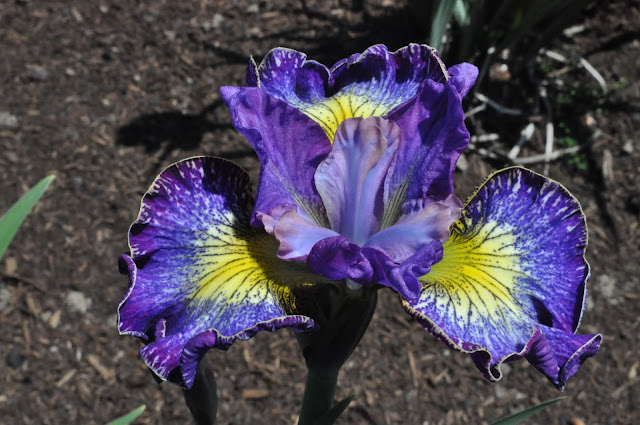by Chad Harris
For the past two years (2015-2016) Mt Pleasant Iris Farm has
been very fortunate to be the recipients of many historic Iris ensata (Japanese iris)
from their homeland. Most of these plants are "Historic," never have
been in the United States nor registered with the American Iris Society. I have
been asked not only to register these but also, when the stock increases, to
distribute them to the open market for prosperity.
This is the beginning of a photo journal of one of the two
beds that will be posted and updated until they bloom.
This bed was planted last summer with 53 irises most no
larger than the end of a thumb. Originally 6 were deemed to be lost; however,
at today's count it seems that only 2 are not coming up.
At this time half will try to bloom this year. Looking
forward to the bloom and the journey!
Just a few weeks later (4/15) and the iris have not only woken
from their winter rest but have more than doubled in size. I can hardly wait
until the bloom in about two months.
May 21 with the heat setting off an early spring, the plants
have doubled and are now waist high with buds starting to show.
June 12 and the maiden bloom of the plants are showing the
many colors and different flower forms that can be found with the Japanese
iris, Iris ensata.
A more detailed look to the different
flower forms, colors, and blooming habits will be presented by Chad Harris at
the Society for Japanese Iris Section Program in Des Moines, Iowa at the
American Iris Society National Convention May 22-27, 2017 titled “Old There,
New Here” a look at historic Japanese irises. For more information about the National, click here to go to the website.
Editor's Note: Most of this blog first appeared on Chad Harris's garden site: Mt. Pleasant Iris Farm. While specializing in water land irises of Asia, there is a good listing of other types of irises too.
Editor's Note: Most of this blog first appeared on Chad Harris's garden site: Mt. Pleasant Iris Farm. While specializing in water land irises of Asia, there is a good listing of other types of irises too.





























































